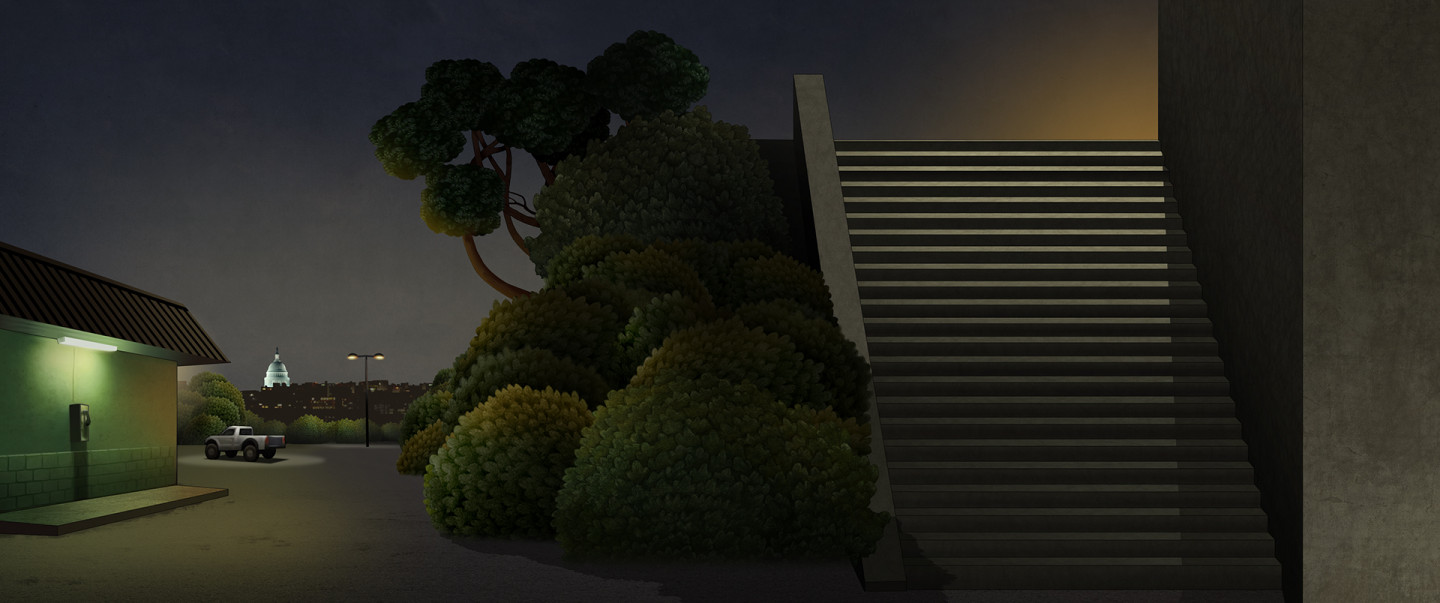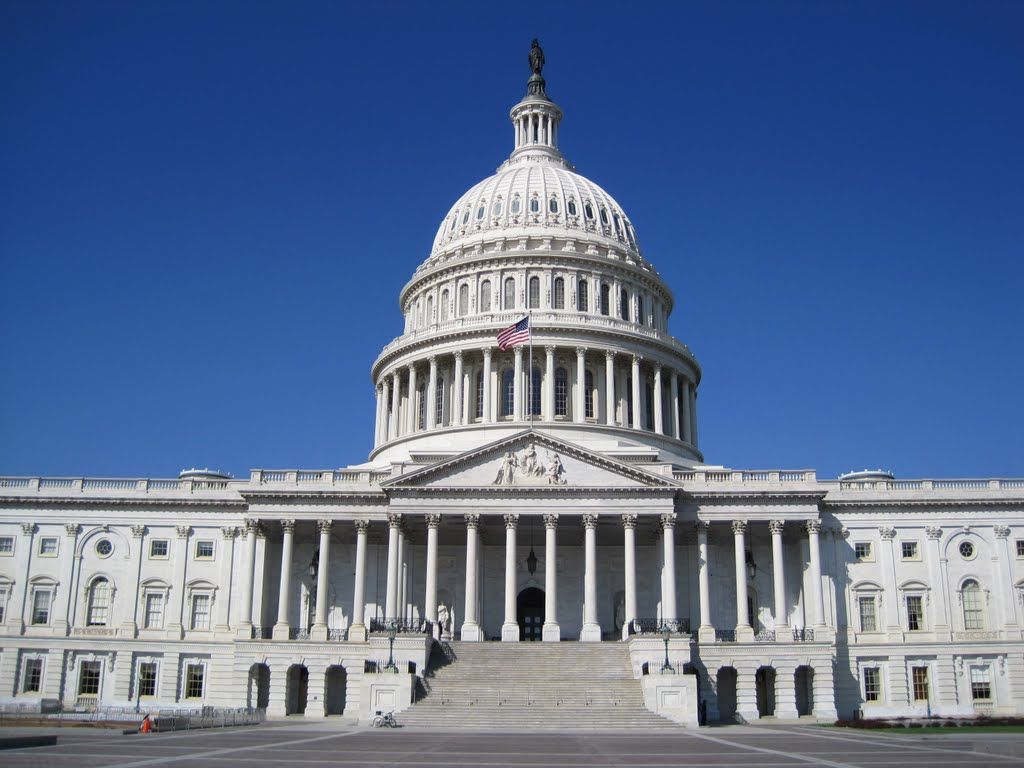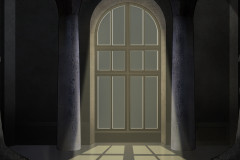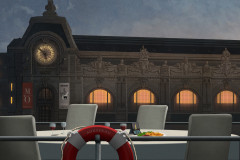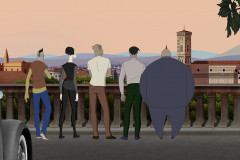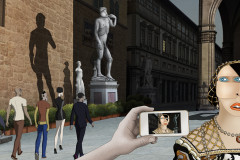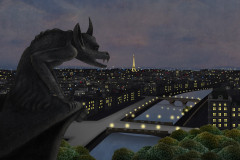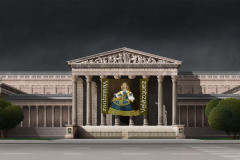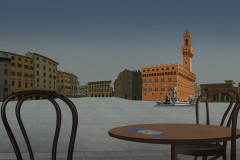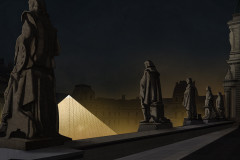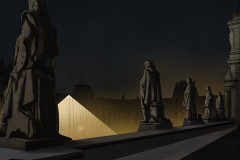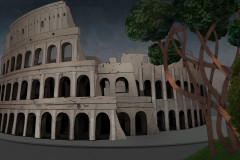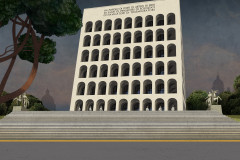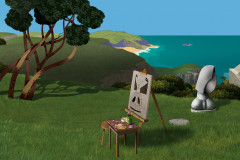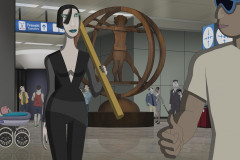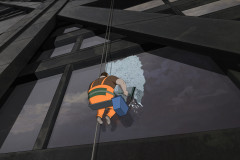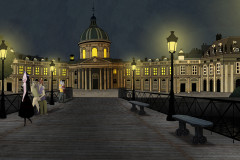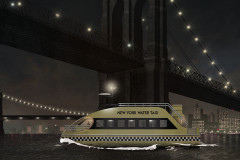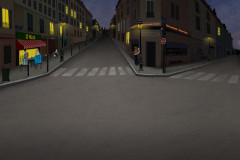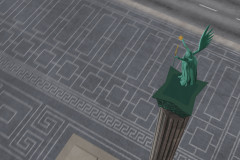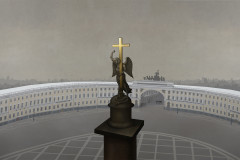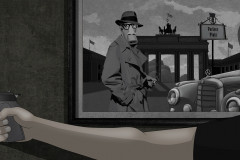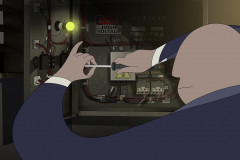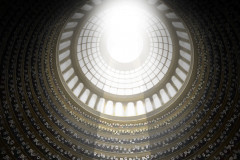Hány, de hány filmben volt már az ellenség célpontja a washingtoni Capitolium! Nem véletlenül, hiszen az Egyesült Államok egyik legismertebb szimbóluma, a törvényhozás jelképe, és még dekoratívabb is, mint a Fehér Ház. A szövetségi kormányzat törvényhozó ágának a székhelyét William Thornton tervei alapján kezdték építeni 1793-ban, és 1800. novemberében ülésezett itt először a Kongresszus. A 72 000 nm-es alapterületű komplexum több mint fele látogatható, és a Szenátus illetve a Képviselőház galériái is nyitottak.
A Capitolium külsejének meghatározó eleme a hatalmas, 55 méter magas és 29 méter átmérőjű kupola csak az 1850-es években készült el. A Capitolium kiszélesítése miatt aránytalannak hatott az első térlefedési megoldás, azért egy magasabb, „esküvői torta stílusú” kupolát építettek helyette. A fém héjas szerkezet itáliai előképek hatását mutatja: kívülről a római San Pietro kupoláját idézi, belülről a Pantheon kazettás dekorációját imitálja.
A Capitoliumnak 1909 óta saját metrója is van ám, amit időről időre modernizálnak. Az eredeti tervek szerint a Capitolium kriptájába került volna George Washington sírja, ő azonban úgy rendelkezett, hogy Mount Vernon-ban temessék el.
A Ruben Brandt-filmben a Capitolium nem kap olyan kitüntetett cselekmény-szerepet, mint az amerikai akciófilmekben. Csak pár jelenet hátterében tűnik fel a monumentális fehér kupola.
United States Capitol
How many films have featured the Capitol as the enemy’s prime target? Countless. And it’s no wonder—this is one of the most recognizable symbols of the United States, the seat of its legislature, and, let’s be honest, a bit more decorative than the White House. Construction began in 1793, based on the designs of William Thornton, and Congress held its first session there in November 1800. Of the Capitol’s 72,000 square meters of floor space, more than half is accessible to the public, including the viewing galleries of the Senate and House of Representatives.
The most iconic feature of the Capitol—the massive dome, standing 55 meters high with a diameter of 29 meters—wasn’t completed until the 1850s. As the building expanded, the original, smaller dome began to look disproportionate, so it was replaced with a taller, "wedding cake–style" design. The metal-clad structure was influenced by Italian precedents: from the outside it evokes the dome of St. Peter’s in Rome, while the interior mimics the coffered ceiling of the Pantheon.
The Capitol even has its own subway system, operating since 1909 and regularly updated. Interestingly, the original plan was to place George Washington’s tomb in the Capitol crypt, but he insisted on being buried at Mount Vernon.
In Ruben Brandt, Collector, the Capitol doesn’t play a central role like it does in American action films. Instead, its monumental white dome appears only briefly, in the background of a few scenes.






